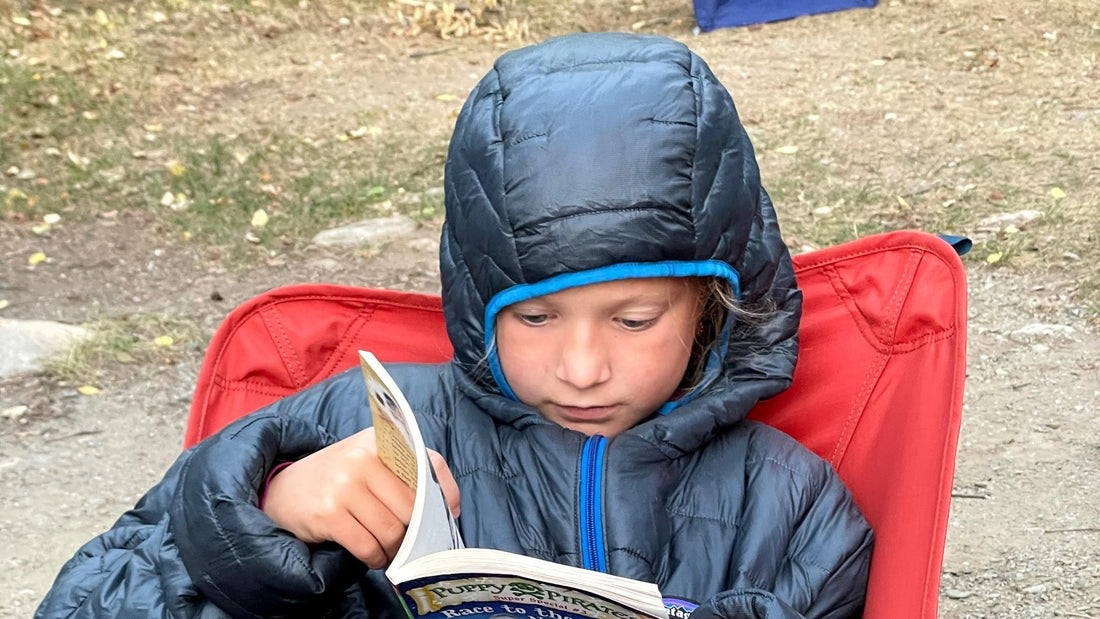
Essential Cold Weather Camping Tips for an Unforgettable Adventure
Jerod ArlichShare
When the temperatures drop and most people pack away their gear, I’m just getting started. There’s something deeply satisfying about the crisp air, the silence of snow-covered landscapes, and the solitude that comes with camping in the cold. But it’s not for the faint of heart—cold-weather camping requires careful planning, the right gear, and a mindset that’s ready for whatever Mother Nature throws your way. Here are some tried-and-true tips to keep you warm, safe, and comfortable while enjoying the wonders of winter camping.
1. Layer Like a Pro
The key to staying warm in the backcountry during cold weather is layering. This isn’t just about piling on as many clothes as possible; it’s about strategically layering to manage moisture, warmth, and breathability.
• Base Layer: Start with a moisture-wicking base layer made from merino wool or synthetic fabric. Cotton is a no-go since it retains moisture, leaving you cold and clammy.
• Mid Layer: This is your insulating layer. Fleece or down jackets are great for trapping heat and providing warmth without adding too much bulk.
• Outer Layer: Your outermost layer should be waterproof and windproof, like a good shell jacket. This will protect you from the elements—whether it’s snow, sleet, or biting wind.
The key is flexibility. If you get too warm while hiking, shed a layer to avoid sweating. When you stop, layer back up to retain your body heat.
2. Sleep Warm: Tips for a Good Night’s Rest
A good night’s sleep can be the difference between a miserable trip and an enjoyable one. Here’s how I keep warm when temperatures plummet:
• Sleeping Bag: Make sure you have a sleeping bag rated for temperatures lower than what you expect. I always bring a bag that’s rated at least 10°F lower than the forecasted lows to be safe. Down bags are great for warmth-to-weight ratio but be cautious of moisture.
• Sleeping Pad: Don’t skimp on your sleeping pad. In cold weather, the ground will sap your heat fast. Use an insulated pad with a high R-value (the higher, the better for insulation). I sometimes double up with a foam pad beneath an inflatable one for extra warmth.
• Clothing: I sleep in a dry base layer—no sweaty clothes from the day’s hike. I also throw a hat and thick socks on to keep the extremities warm.
• Hot Water Bottle Trick: Before bed, I heat up water and pour it into a Nalgene bottle. Toss it into your sleeping bag near your feet, and you’ll stay toasty for hours. Just make sure it’s sealed tightly!
3. Hydration is Key, Even in the Cold
It’s easy to forget about hydration when you’re not sweating buckets like you would in the summer. But cold, dry air can dehydrate you quickly, and dehydration leads to poor circulation—which means getting colder, faster.
• Insulated Bottle: I use insulated bottles or bottle sleeves to keep my water from freezing. Sometimes I’ll carry my water bottle upside down in my pack since the top freezes first.
• Warm Drinks: Bring plenty of tea, coffee, or hot cocoa to warm you up and encourage drinking. A hot drink can go a long way toward boosting morale on cold mornings.
4. Keep Your Fuel Efficient
Cooking in the cold takes longer and requires more fuel, so plan accordingly. Stoves that work well in summer may struggle in freezing temperatures, so opt for cold-weather-friendly stoves like liquid fuel or integrated canister systems.
• Warm Your Fuel: If you’re using a canister stove, keep your fuel warm by storing it in your sleeping bag overnight or keeping it in your jacket pocket during the day.
• Insulate Your Stove: Cooking on snow? Make sure to insulate your stove from the cold ground with a foam pad or a piece of wood to prevent heat loss and increase efficiency.
5. Footwear for Cold Conditions
Cold feet can ruin a trip faster than anything else. To keep your feet warm, dry, and blister-free, follow these tips:
• Waterproof Boots: Your boots should be insulated and waterproof, whether you’re trekking through snow or slushy trails. Look for boots with a high ankle to keep snow out and keep your feet dry.
• Gaiters: If you’re traveling through deep snow, gaiters are a must. They prevent snow from getting into your boots and soaking your socks.
• Wool Socks & Liners: Start with a moisture-wicking sock liner, then add a thick wool sock. If your feet sweat during the day, change into dry socks as soon as you reach camp.
6. Manage Condensation in Your Tent
In cold weather, condensation can quickly build up inside your tent, leaving everything damp and icy by morning. Here’s how I avoid that:
• Ventilate: Even if it’s cold, make sure to vent your tent. Crack a door or window slightly to allow moisture from your breath to escape. It might seem counterintuitive, but better airflow helps prevent that chilly, damp feeling.
• Avoid Cooking Inside: As tempting as it is to cook inside your tent for warmth, the added moisture from steam only increases condensation. If you must cook under shelter, do it in the vestibule.
7. Be Prepared for Emergencies
Cold weather camping can be unpredictable. Conditions change fast, and staying safe requires being prepared for the worst.
• Fire-Starting Kit: Pack a reliable fire-starting kit with waterproof matches, a lighter, and fire starters like cotton balls soaked in petroleum jelly. You may need a fire to dry out or warm up fast.
• Extra Gear: Always pack an extra hat, gloves, and socks. Wet or frozen gear can be a trip-ender if you don’t have backups.
• Know Your Limits: It’s important to know when to push through the cold and when to call it a day. Cold weather camping can quickly turn dangerous if you’re not careful, so always be prepared to adjust your plans based on conditions.
8. Food for Fuel: Eat More, Stay Warm
In cold weather, your body burns more calories just trying to stay warm. So don’t be afraid to eat more than usual. High-calorie, high-fat foods are your best friend when the mercury drops.
• Snacks on Hand: Keep easy-to-grab snacks in your pockets like nuts, cheese, or energy bars. You’ll want fuel for those cold mornings or when you’re on the move.
• Warm, Hearty Meals: Stews, pasta, and other hot, hearty meals can give you the warmth and energy boost you need at the end of the day. A hot meal will warm you up from the inside out.
9. Respect the Cold
Cold weather camping is about working with nature, not fighting it. Slow down, take your time, and respect the challenges that winter camping brings. The cold demands preparedness, but it also rewards you with unique beauty and a sense of accomplishment you can’t get in warmer seasons.
In Conclusion: Cold Weather Camping is Worth the Effort
There’s something about waking up in the backcountry, with frost on your sleeping bag and the sun casting a warm glow over a snow-covered landscape. Cold weather camping isn’t for everyone, but with the right preparation, it’s an incredible way to experience nature’s raw beauty. Layer up, stay hydrated, eat well, and embrace the quiet serenity that winter camping brings. Trust me, there’s nothing quite like it.
